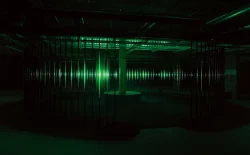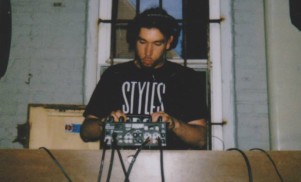When Phil Tortoroli and Cam Curran founded Styles Upon Styles in 2012, they had all the necessary ingredients for a modern day independent music label: day jobs, no real idea how to go about it, a stack of demos, and a dash of hubris.
Curran says he knew the pair had “better taste” than a lot of what they found in online shops like Boomkat or Bleep. For Tortoroli, the decision was also a response to spending his days in a corporate environment at multimedia conglomerate CBS, where he saw “so many people with such power and money putting out things with such bad taste.”
Depending on who you ask, starting a music label is either one of the dumbest or the most rewarding things you could do today. Since the music industry began to collapse in the 2000s, having ignored the portent of digital technology, things have been different for indie labels. There are now as many independent business models as there are genres to file your releases under, and while running a label is unlikely to pay your rent, it can become self-sufficient – you just have to remain realistic. And if there’s one thing you can say about the SuS founders, it’s that they’re realists.
“The success of these records validates us in wanting to promote and support new artists.”Phil Tortoroli
Sitting in the back room of a Bushwick bar on one of the first cold nights of 2016, Tortoroli and Curran are relaxed, cracking jokes and reminiscing. They’ve just received the test presses for SuS011, an album of soft experimental meditations by classically trained composer Zach Cooper, and after our interview they’ll be heading next door to broadcast a regular SuS show on Newtown Radio. There’s a clear camaraderie between them which stems back to their meeting in the late 2000s at university in St. Andrews, Scotland. Two Americans students in a foreign land, they bonded over music, radio, and parties. Their late night listening sessions continued when they moved back to New York eventually turning into a blog, The Kort, where they posted “a bunch of random shit” and interviewed new artists — including a young Visionist and a duo by the name of Disclosure. By 2012, demos had begun to amass at their digital doorstep and Tortoroli and Curran decided to transfer their energies to running a label. The name was lifted from the opening verse on A Tribe Called Quest’s ‘Buggin’ Out’, where Phife Dawg claims to have “styles upon styles upon styles,” summing up their desire to be a “varied label, not strictly defined.”
In the three years since launching, Styles Upon Styles has lived up to the aspirations of its founders. Across more than 25 releases, the label has defied simple definition by genre, instead offering dizzying dive into an ever-expanding world of modern electronic, pop, and soul music — claustrophobic electro vibes from New York’s Gutnose (Vicetopia), smeared bedroom pop by Sacramento’s Zac Nelson (New Once), and supple techno from Brooklyn trio BM/CC/CW.
But in typical indie label fashion, Styles Upon Styles started by doing things wrong. The first five releases were part of a series called Bangers & Ash, technically a sub-label; the first ‘proper’ SuS release, the Hall of Human Origins EP by experimental NYC trio Archie Pelago, only came in the autumn of 2013, 11 months after the label had launched.
“We were on the dancefloor of Francois K’s Deep Space night at Cielo,” recalls Curran, “when Phil turned around and said, ‘what if we did a series of 12”s with dance music on one side and not dance music on the other, but the same artist? And we’ll call it Bangers & Ash.’ We laughed and woke up the next morning realising it wasn’t such a bad idea.” They still laugh about it today.
The series (bangers for the dancefloor, ash for the chill-out home sessions) currently stands at six entries of a desired 10, the latest being four tracks of ambient and techno from Brandon Moeller, who noted in the press release that the SuS catalog gave him “the freedom to go deep and crazy, and for that I am thankful.”

Doing things the wrong way proved to be the right idea. Aside from being somewhat of a vanity project—“most labels are run as vanity projects,” states Tortoroli—SuS was intended as a launchpad for new artists, with the first five Bangers & Ash entries featuring unknown producers. After tracks from Clay Wilson’s release in the series (002) began appearing in sets by Patrick Russell, the young and still largely unknown Brooklyn producer was picked up by storied New York techno institution The Bunker. A year later, in February 2014, Gabriel Garzon-Montano debuted on SuS with Bishouné: Alma del Huila, six heartfelt compositions that paid homage to family, heritage, and the timelessness of soul music. By early 2015, he’d been handpicked by Lenny Kravitz to open his European stadium tour and found himself sampled by Drake (on ‘Jungle’ from If You’re Reading This It’s Too Late) after the Canadian rapper was passed a copy of the record by a joint acquaintance.
“The success of these records validates us in wanting to promote and support new artists,” says Tortoroli. Not every debut on SuS has had the same shine, but they remain important in their own way. “I was really happy to get the Kloke record out this past year because it was so weird and fucked up,” says Curran of England-born, Australia-based producer Andy Donnelly, whom the pair had first encountered in the days of The Kort. The year Donnelly was invited to the 2013 edition of the Red Bull Music Academy in New York, SuS released Sea Levels, six tracks of delicate electronic productions, followed by P.H.O.N.E in 2015, a shorter and more intense two-track 12”. “It’s really what we want to be about, subverting expectations,” says Curran. “We could have stopped putting out anything else after Gabriel and just focused on him,” adds Tortoroli. “But the next record was Ancestors by White Visitations and he’s now doing well on his own.”
In the 2001 documentary Scratch, DJ Shadow hits on the ephemerality of recorded music when, while sitting in the basement of Rare Records in Sacramento, he points to the stacks of records gathering dust and calls them “a big pile of broken dreams.” Tortoroli is honest about the part SuS is playing in this particular tradition. “My hope is that we can become a label that in 50 years will be something diggers would go towards. The kind of label that someone like Finders Keepers would choose to reissue.”

“It’s weird for me to know about labels who claim to be from the city but don’t give back to the community.”Phil Tortoroli
Earlier that day, the pair had received an email letting them know that another Cash Money artist had sampled Garzon-Montano. This time, however, the sample wasn’t cleared. They’re grateful for the promotion but remain a little sour about how disposable music has become. “It took a year to clear Drake sampling Gabriel,” says Tortoroli. “Lawyers, managers – and we’ve still not seen any royalties from it. It was the biggest selling record of 2014. Just give us a check and we’ll leave you alone for six months.” Whatever money does come from the deal — SuS owns the rights to the master recording — will simply be folded back into their operation. Curran compares the situation to that of Hyperdub, whose founder Kode9 has said that Burial, their most popular artist, has helped keep the label afloat. “Gabriel is our Burial in that instance.”
As Styles Upon Styles enters its fourth year, the label is growing alongside its owners. Tortoroli jokes that any hubris they had going in is definitely gone. They’ve graduated from the early days of figuring out how to do things only to realise “how competitive and crazy it is out there,” says Curran. Still they’re trying new things, including offering artists multi-album deals so they can evolve together in a more traditional way. Most importantly, they’ve also made the decision to embed Styles Upon Styles in the community it inhabits.
“It’s really important for me that SuS lives up to being a New York label,” says Tortoroli. “In turn I believe that any business that makes itself out to be a part of a community or city should back that.” Starting in January 2016, Tortoroli and Curran will donate 20% of the proceeds from previous releases in the catalogue to the National Police Accountability Project, a non-profit organisation that funds civil rights lawyers. The decision is a response to the reality of police brutality in New York City, which is home to the biggest police department in the country. Every month, the pair will donate a portion of the label’s profits (not the artists’) to a different organisation. There is also talk of putting together a fundraising compilation featuring exclusive material. “It’s weird for me to know about labels who claim to be from the city but don’t give back to the community,” says Tortoroli. “Or from an artist side, who don’t speak about and commit to mental health awareness.”
The decision to invest the label into its community is a simple but powerful gesture. The accepted wisdom today is that running an independent label won’t be easy, but it can be satisfying. And, perhaps, it should also include that doing so can be a way to change our world, by letting fans know that art doesn’t exist in a vacuum.
Read next: 10 labels to watch in 2016.































